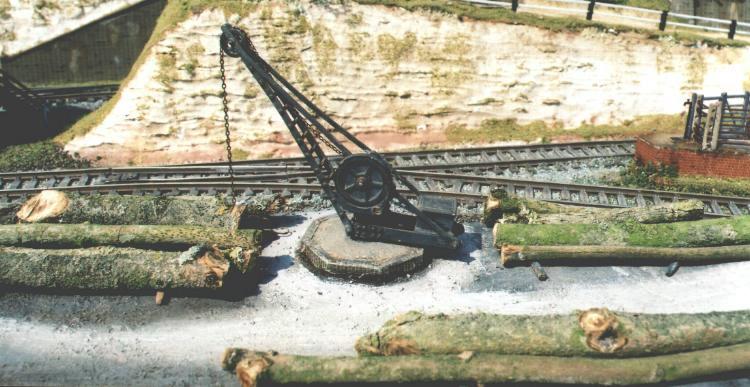 |
"At the fork in the sidings sat an iron sentinel
surrounded by shorn logs
recumbent. The woodsmen had been busy doing their bit for the war effort."
indent I have formed the opinion that less than half of British goods yards actually possessed a crane but they not only make interesting models but also give another specific location for "spotting" a wagon when shunting a goods train. Now there were containers in the thirties but they were few and far between so some other kind of load for a crane to handle is preferable. The extensive felling of home-grown timber during the war (for everything from coffins to Mosquitoes), provides us with an effective and easily produced subject.
indent Naturally such a load needs a suitable wagon and they are around (a commercial bogie bolster is available) but they are rather longer than 2 ordinary wagons and are thus expensive in storage siding space - which reduces the number of wagons available for shunting. A double bolster is about the smallest suitable single wagon and Parkside Dundas do a kit of a NE one which was introduced in 1941/2. (You can see it in the left-hand corner of photo 3.) A less detailed alternative would be the old Hornby/Wrenn double bolster - if you can still find one somewhere!
indent There's one more location to spot a wagon - but it's not in the yard... (see next photo)
| Previous photograph in series | Back to "Upper Isis Room" entrance | Next photograph in series |